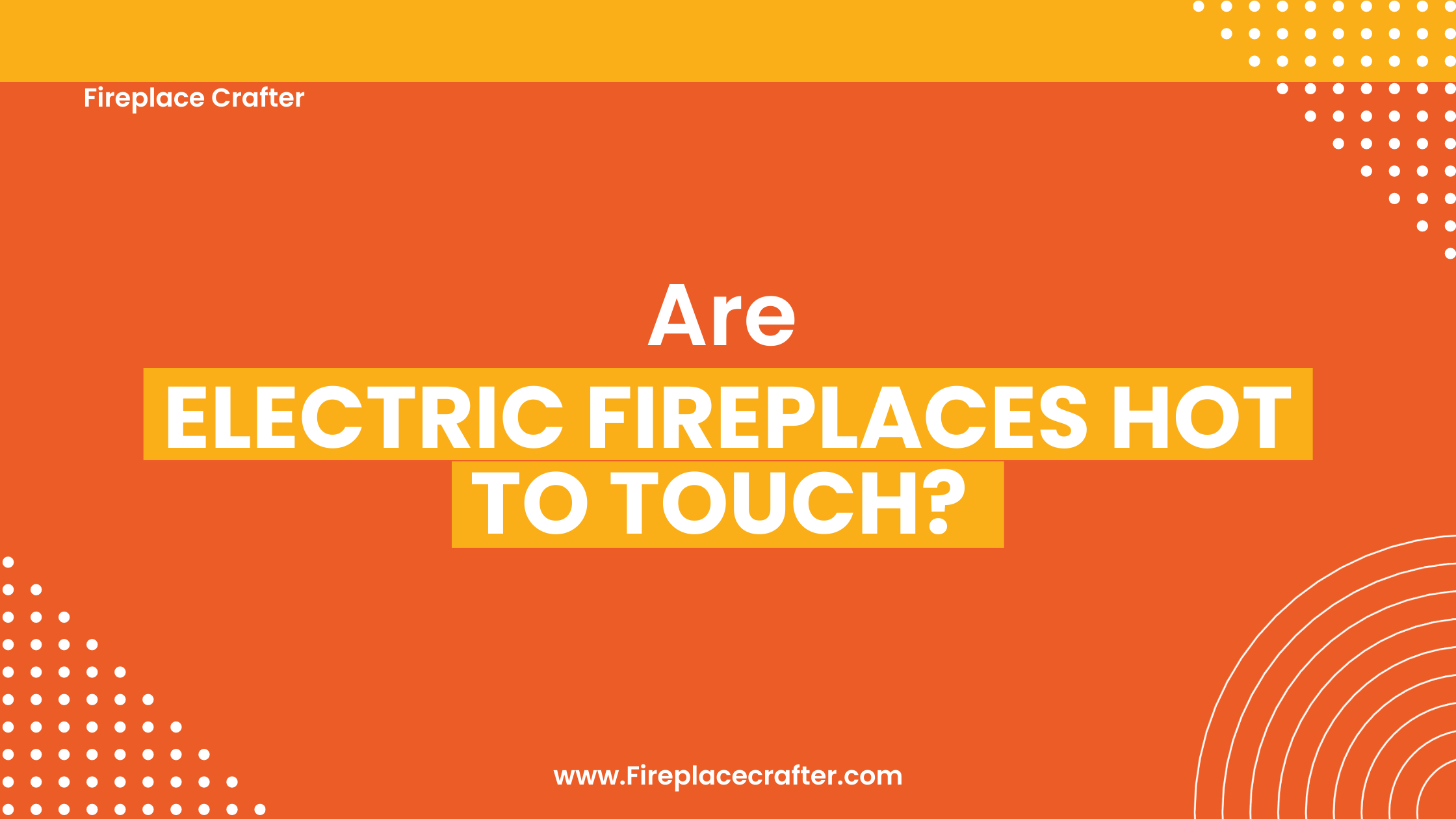2024 Guide: Are Electric Fireplaces Hot to Touch?
Most of the users are concious about their electric fireplace and usually they think “Are Electric Fireplaces Hot to Touch?” Let’s Uncover the secret.
An intriguing concern shared by many homeowners exploring the realm of electric fireplaces is, “Are electric fireplaces hot to the touch?” To assuage your doubts and guide you towards a well-informed decision, we’ll delve into the mechanics of electric fireplaces and discuss their safety features.
Do Electric Fireplaces Hot to Touch?
Electric fireplaces do indeed get hot to the touch. It’s warm, but we can’t say them hot.
Why Are Electric Fireplaces Hot to Touch?
Contrary to common perception, electric fireplaces are not typically hot to touch. The warmth felt on the surface of an electric fireplace primarily arises from the heat emitted by the unit, not the unit itself.
These appliances employ advanced heat dissipation technology that channels the heat outward, keeping the outer casing cool.
Therefore, while the air around the electric fireplace is comfortably warm, the actual surface of the unit remains safe to touch, significantly mitigating the risk of accidental burns.
Comparing Heat Production in Electric vs. Traditional Fireplaces
To understand how electric fireplaces operate compared to traditional ones, let’s inspect their heat production capacities in detail.

Electric Fireplaces
Electric fireplaces, as the name suggests, employ electricity to produce heat. They are designed with internal heating coils and a built-in fan that disperses the warm air evenly throughout the room.
Electric fireplaces can produce between 4,000 and 5,000 British Thermal Units (BTU) of heat, which is adequate for small to medium-sized rooms.
Traditional Fireplaces
Contrarily, traditional fireplaces generate heat by burning wood or gas. These fireplaces can produce a significant amount of heat, up to 60,000 BTU, making them suitable for heating large spaces.
However, the heat distribution is usually less uniform, focusing mainly around the fireplace.
Are All Electric Fireplaces Hot to Touch?
Although most electric fireplaces are designed to keep their exteriors cool during operation, not all models adhere to this standard.

Modern Electric Fireplaces
Modern electric fireplaces with advanced safety features ensure that heat is primarily directed outward, thereby keeping the outer surface cool to the touch.
Older Models
However, older models or those with fewer safety provisions may have surfaces that become warm or hot during operation.
Therefore, it’s important to examine the safety specifications of a particular model before purchase to ensure a safe and enjoyable experience.
Learn: How To Successfully Build A Frame For An Electric Fireplace Insert
Role of Heating Elements and Fans in an Electric Fireplace

Electric fireplaces function through an intricate combination of heating elements and fans. The heating element, often a metal coil, produces heat. When electricity flows through these coils, they become hot.
This heat, however, doesn’t make the fireplace surface hot, thanks to the second crucial component, the fan. The built-in fan, often termed a blower, operates with the heating element. The fan blows as the coils heat up, pushing the warm air out into the room.
This process, called forced convection, is essential for effectively operating an electric fireplace. It not only aids in evenly dispersing the heat throughout the space but also plays a crucial role in maintaining a cooler surface temperature.
Why Doesn’t the Exterior of an Electric Fireplace Get Hot?
The answer lies in the ingenious design and construction of these appliances. Electric fireplaces are typically designed with an air gap or insulation between the heating element and the exterior casing.
This arrangement ensures that the heat produced by the element is directed outward into the room rather than towards the outer surface of the unit. The fan plays a pivotal role here. Rapidly blowing the warm air away from the unit keeps the heat from accumulating and heating up the fireplace’s exterior.
This two-fold mechanism of insulation and forced convection keeps the exterior of an electric fireplace relatively cool to the touch, enhancing its safety profile.
Safety Tips for Using Electric Fireplaces
While electric fireplaces are generally safer than traditional fireplaces, it’s essential to adhere to certain safety precautions for a hazard-free experience. Here are some practical tips:

- Before using your electric fireplace, thoroughly read the user’s manual to understand its operation, safety features, and maintenance guidelines.
- Ensure the fireplace is placed on a flat, stable surface and away from flammable materials like curtains, furniture, or papers.
- Don’t overload your electrical circuit. If other high-wattage appliances run on the same circuit, it may cause overheating or a power outage.
- Never block the fireplace’s air vent. It’s where the heated air is expelled, and blocking it can cause overheating.
- Regularly clean and maintain your fireplace. Ensure there is no dust or debris buildup that could potentially cause a fire.
- Use a fireplace screen or gate to keep children and pets at a safe distance, even if the fireplace is cool to touch.
Always turn off and unplug the fireplace when it’s not in use.
Conclusion
Thanks to advanced technology and design considerations, electric fireplaces are generally cool to the touch. However, safety precautions should always be considered to guarantee a secure and enjoyable user experience. Thorough research before purchase and adherence to safety guidelines can ensure you reap the benefits of an electric fireplace while minimizing potential risks.







